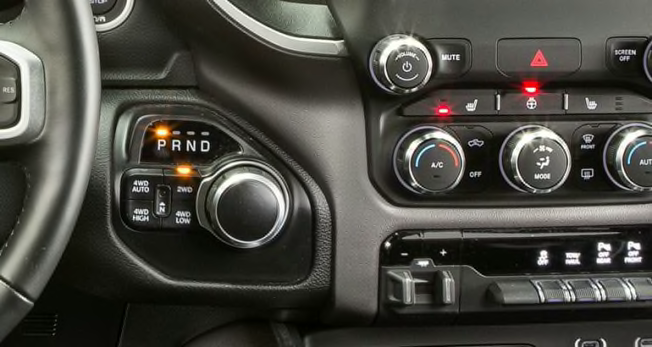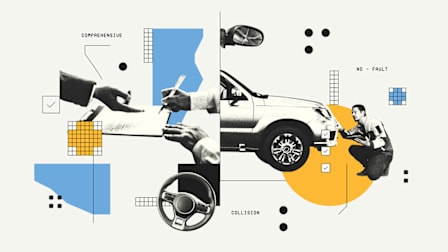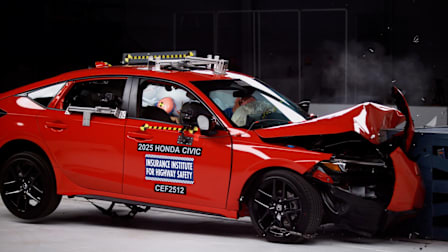How to Safely Use Unconventional Car Shifters
A Rivian shifter glitch highlighted the need for less-confusing shifters

As the associate director of vehicle technology at CR’s Auto Test Center, Kelly Funkhouser drives a lot of cars and is always on the lookout for issues related to the usability of various automotive features. She discovered one of these issues quite by surprise last year, when the Rivian R1S she was driving on a public road shifted into Reverse when she attempted to turn off the adaptive cruise control.
"Traffic was slowing to a crawl, and someone cut in front of me. I wanted to make sure the ACC was off, so I pushed upward on the shifter stalk (shown above) with my finger, which is how you deactivate cruise,” Funkhouser says. “Instead of a quick flick, I held it up for a couple of seconds, which is when the SUV started backing up. The vehicles behind me were speeding up as I started to go backward, so it certainly caused a moment of panic."
We reached out to Rivian immediately after discovering the problem, and the automaker responded quickly and assured us that a software fix was being expedited. Later, they told us that a number of changes had been implemented to prevent unintentional shifts.

Photo: John Powers/Consumer Reports Photo: John Powers/Consumer Reports
Consumer Reports has long pushed for easy-to-use shifters that drivers can use without taking their eyes off the road. Many cars still come with straightforward shifters that don’t require a lot of thought or attention span to operate, but others continue to cause driver distraction and slip-ups.
“If the shifter takes driver attention away from the road, or it allows the driver to change gears without meaning to, it creates a safety hazard,” Funkhouser says. “A gear selector should have a single function, and not perform double duty like the Rivian stalk. And it should be distinct from adjacent controls, rather than a dial next to other dials, like in Ram trucks.”
Funkhouser adds that just because a gear selector is different doesn’t mean it’s bad. “Many people like knobs and buttons because there’s no lever to get in the way of cup holders, and purse and backpack straps can’t get caught on them.”
Taking the Confusion Out of Unconventional Shifters
Even if your car has a shifter you find frustrating, there are ways to make sure you’re using it safely, says Funkhouser.
Ask the dealer. If you just bought the car, you may find a brief operational tutorial at the dealership useful, not just for operation of the controls, but for phone pairing, instrument panel customization, power seat memory settings, and other features that may take a little know-how to figure out. Even if you’ve had the car for a while, or you bought it used, the dealer service department should be able to answer questions about how to operate it.
Reach out to the manufacturer. If—like Funkhouser—you accidentally discover something that seems unsafe, don’t hesitate to contact the manufacturer’s customer service desk directly. If there’s a software update or other fix in the works, you will be given instructions on how to access it. You can also report potential safety problems to the National Highway Traffic Safety Administration.
Consult the owner’s manual. If you’re looking for step-by-step instructions on how to use a nontraditional shifter, this glovebox-sized tome—or the digital version some cars now come with—should contain most of the information you need.
Practice with the car. If, even after reading through the instructions and getting tutoring from an expert, you still find operating the shifter counterintuitive, practice using it at low speeds, in a controlled environment, such as an empty parking lot or a dead-end street. And make sure you pause between gear shifts, taking the time to look at the selector to ensure that you put it in the desired gear, rather than operate it just by feel.
Familiarize yourself with the car’s manual mode, if so equipped. Manual mode makes it possible to shift between forward gears to improve acceleration responsiveness, or slow the car with engine braking while descending a steep hill or slowing down ahead of a turn. Some cars come with earlike paddle shifters mounted just behind the steering wheel. Typically, the left paddle downshifts, and the right one upshifts. Most people don’t use manual mode at all, but if your car has it, there’s a chance you could accidentally bump the shifter into manual mode while driving, then wonder why your car’s engine is revving so high. Knowing how to switch between manual and automatic modes will ensure that such an occurrence doesn’t leave you scratching your head.




















